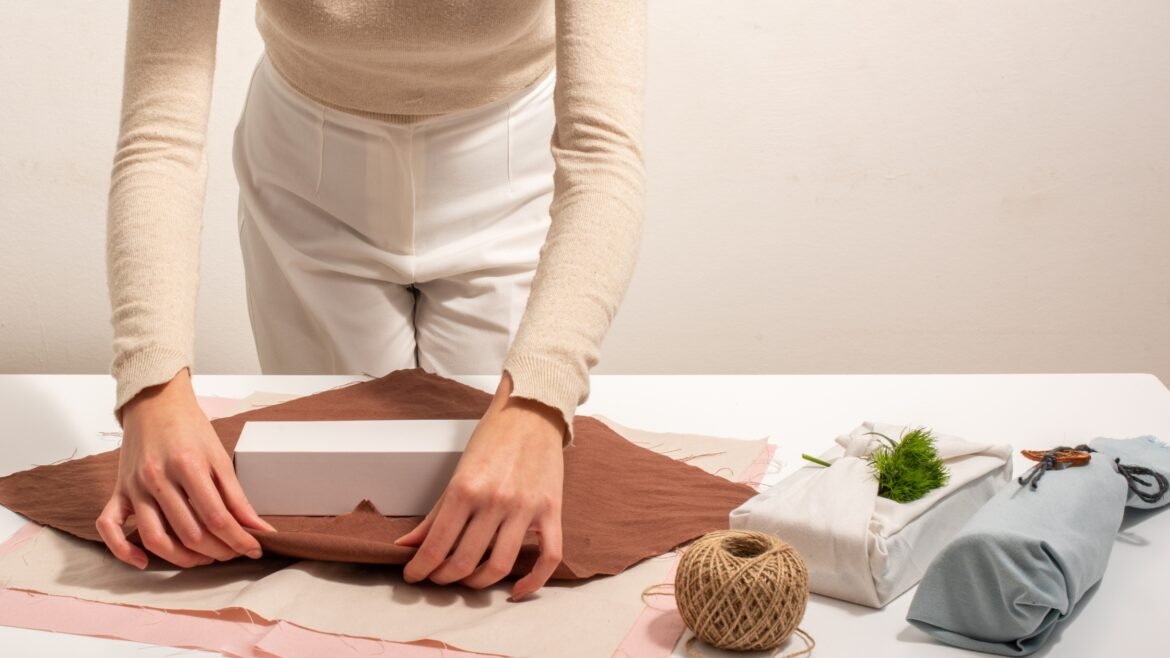
Maintaining Linen Elegance
Linen, often associated with elegance and timelessness, is a staple in the world of sustainable living and the home décor space. Its fibers, derived from the flax plant, offer numerous advantages, from its hypoallergenic and moisture-wicking properties to its unmatched breathability and durability. But, as with any treasure, maintaining and preserving linen can extend its life, enhance its natural charm, and contribute to a sustainable lifestyle by reducing waste.
In this extensive guide, we’ll explore the multifaceted world of linen maintenance. Whether you’re a seasoned pro at curating the perfect linen lifestyle or just beginning to tread the waters of sustainable home care, each section will provide you with in-depth knowledge and practical tips to handle your linen with the care it deserves.
1. Introduction to the Versatility of Linen in Home Decor and Fashion
Linen’s allure extends to various aspects of our daily lives, seamlessly blending into both our fashion choices and the fabrics within our homes. With its understated luxury, linen has an unmatched ability to transform any space into one of modern yet effortless chic.
In The Closet: The breathability of linen makes it a go-to fabric for warm climates and casual-chic wardrobes. From lightweight summer shirts and trousers to formal wear and high-end fashion, linen is a fabric that can be tailored to almost any style.
In The Home: When it comes to home textiles, linen is one of the most versatile fabrics available. It is the interior designer’s choice for curtains, tablecloths, napkins, and bedding. Linen’s natural luster and texture add layers of sophistication to any room, whether it’s in the form of a cozy throw or a set of cushion covers.
2. Why Linen Maintenance is Key for Longevity and Sustainability
Proper maintenance of your linen items not only prolongs their life but also minimizes the carbon footprint associated with the production and disposal of textiles. Sustainable linen care is a proactive step toward maintaining a healthy, eco-friendly environment in your home.
Extending the Life of Linen: Home textiles and garments made from linen often outlive their counterparts in cotton or synthetic fabrics, but only if they are well-cared for. Each cleanse, fold, and store impacts the longevity of your linens.
Eco-Friendly Approach: Choosing to invest time in the proper maintenance of your linen products means you’re actively participating in ethical consumerism. By making your linens last, you reduce the need for new items to be produced, which in turn reduces the environmental impact of manufacturing and transportation.
3. Essential Tips for Washing Linen to Maintain Quality
Washing linen can seem like a daunting process, but in reality, it’s a simple routine that, when done correctly, will maintain the fabric’s strength and softness over time.
Regularity is Key: Linen items shouldn’t be washed too frequently. Unless soiled, a gentle wash every month or two will suffice to keep them fresh and clean. Over-washing can cause the fibers to break down and the fabric to lose its natural sheen.
Gentle Cycles and Mild Detergents: Always opt for a gentle machine cycle or hand wash when laundering your linen. Use a mild detergent specifically designed for delicate fabrics to avoid harsh chemicals that can damage the fibers.
Avoid Bleach and Fabric Softeners: It may be tempting to use these products to keep linen bright and soft, but these can lead to discoloration and a waxy buildup on the fabric. Instead, consider natural whitening solutions like lemon juice or baking soda.
Stain Treatment Before Washing: Treat stains immediately to prevent them from setting. Use a gentle natural stain remover and allow the treatment to sit for several minutes before washing.
4. Proper Drying Techniques to Avoid Shrinkage and Wrinkles
How you dry your linen items is just as important as the washing process. The wrong techniques can lead to shrinkage, warping, and stubborn wrinkles that are hard to remove.
Air Drying for the Win: The best way to preserve your linen’s quality is to air dry it naturally. The soft breeze allows the fabric to breathe while the sun works naturally as a stain-remover and disinfectant.
Lay Flat: When possible, lay your linen items flat to dry. This technique avoids stretching and maintains the proper shape of the article.
Avoid the Dryer: If using a dryer is necessary, use the lowest heat setting to prevent shrinkage. Remove the items while slightly damp to iron or hang dry to avoid over-drying and unnecessary wrinkling.
5. Storage Guidelines to Keep Linen Fresh and Moth-Free
Storing linen correctly is crucial to preserving its appearance and structural integrity. Improper storage can lead to yellowing, odors, and even moth damage.
Clean Before Storing: Ensure your items are completely clean and dry before storing. Storing dirty linen can lead to discoloration and can attract pests.
Use Cloth Storage Bags: Avoid plastic storage containers and bags, which can trap moisture and cause mildew. Instead, use cloth storage bags to allow the fabric to breathe.
Add Natural Moth Deterrents: Store with sachets of lavender or cedar to deter moths and keep your linens fresh. Avoid mothballs, as the chemicals can be harsh and difficult to remove.
Check and Refold Periodically: Every few months, check on your stored linens to refold and ensure there are no signs of mustiness or pest activity.
6. How to Remove Stains from Linen Fabric
Accidents happen, and stains are often the result. When it comes to stain removal on linen, patience and the right approach can save your beloved items from being marred.
Act Fast: The longer a stain sits, the harder it is to remove. Act quickly to blot or treat the spot before it sets.
Go Natural: Many natural stain removers work effectively on linen without damaging the fabric. Baking soda for odors, white vinegar for alkaline stains, and lemon juice for rust are just a few examples.
Test a Small Area First: Especially for colored linen, test any stain treatment in a small, inconspicuous area to check for color fastness.
7. Innovative Uses for Old or Worn Linen to Reduce Waste
In the spirit of reducing waste and living sustainably, there are many creative ways to repurpose linen items that have reached the end of their usefulness.
Fabric Scraps for Crafting: If you have linen sheets or clothes with unwearable areas, consider cutting them into smaller pieces for quilting, fabric flowers, or other sewing projects.
Reusable Produce Bags: Old linen can be fashioned into sturdy produce bags, offering a more sustainable alternative to plastic.
Compostable Options: For items that are too worn to repurpose, natural linen fibers can be composted, contributing to soil health and closing the loop on the fabric’s life cycle.
8. Conclusion with a Focus on the Importance of Sustainable Linen Care
Linen is more than just a fabric; it’s a lifestyle choice that reflects an eco-conscious mindset. By maintaining and caring for your linen in a sustainable manner, you’re not only ensuring the longevity and beauty of your items but also making a positive impact on the environment.
Every Wash Counts: Be mindful of how often you launder your linen and the products you use. Each decision can contribute to sustainable living.
Repurpose and Recycle: Look for opportunities to repurpose or recycle your linen items rather than throwing them away. Every little bit helps in the larger goal of reducing waste.
Spread the Word: Share your knowledge and passion for sustainable linen care with others. Encourage friends and family to adopt similar practices, and together, we can make a significant difference.
By following these comprehensive guidelines and adopting a sustainable approach to linen care, you can enjoy the benefits of this beautiful fabric while contributing to a greener, more sustainable planet.


